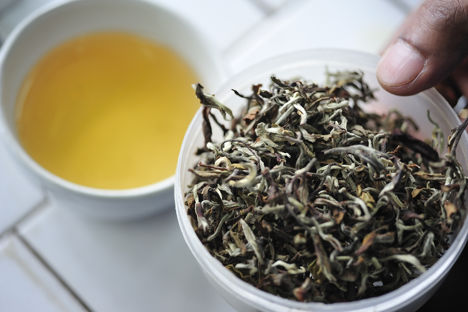
A journey through Darjeeling and its world-class tea gardens
The Indian region of Darjeeling boasts some of the finest tea estates in the world thanks to a seamless combination of altitude, climate and craftsmanship. Join us as we explore this stunning part of India, discover why its tea is best in class and look at why it’s the perfect place to start your own tea adventure.
A journey through Darjeeling and its world-class tea gardens
The Indian region of Darjeeling boasts some of the finest tea estates in the world thanks to a seamless combination of altitude, climate and craftsmanship. Join us as we explore this stunning part of India, discover why its tea is best in class and look at why it’s the perfect place to start your own tea adventure.
Darjeeling, in West Bengal, India, is an exceptionally beautiful part of the world. Sitting at the foot of the Himalayas, it is a region covered in rolling hills thick with lush vegetation, and dramatic, towering mountains for a backdrop. The stunning geography is just one of the reasons it’s famous, however – while Darjeeling's hill stations are a recognisable sight, it’s the tea leaves grown here that really put the area on the map.
Darjeeling’s climate is unlike any other tea-producing region in the world. The cooler, drier atmosphere effects how the tea plants grow and how they’re processed, resulting in the unique, delicate and floral flavour that’s made Darjeeling tea so highly prized. But it’s not just the location that’s responsible for this very special tea; the plants themselves are derived from Chinese varieties brought over by the British around 150 years ago, which makes them different from all the other tea gardens in India.
150 years might sound like a long time, but compared to China – where tea has been produced and appreciated for thousands of years – the teas of Darjeeling are relatively new. The fact that it’s so quickly become one of the most revered varieties of tea in the world is testament to the people who grow, pick and produce it. But what exactly is it that makes Darjeeling tea some of the best in the world? It comes down to a number of factors: altitude, climate and the skill of the people who make it.
While the region is at the foot of the Himalayas, it’s still high up in the clouds – some tea estates are over 2,000 metres above sea level. This means in the winter months temperatures are lower than normal, which causes the tea plants to lay dormant until spring (when new growth occurs). This is why tea grown in Darjeeling differs from leaves in other regions; the cooler winter weather means the flavours in the leaf accumulate more slowly than anywhere else.
Another knock-on effect of Darjeeling’s climate is how the tea is processed. To make black tea, the leaves are oxidised – once they’re picked, wilted and rolled, they begin to react with the oxygen in the air and darken (a bit like an apple turning brown once you bite into it). This has a huge impact on the flavour of the tea, and black teas are left to oxidise the longest. In Darjeeling, however, the cooler, drier weather means oxidisation doesn’t happen in quite the same way as other tea-producing regions. Darjeeling tea never achieves full oxidisation, resulting in a lighter, more floral and delicate flavour than typical black teas.
Of course, even the finest crop of tea leaves would be worthless without a team of skilled artisans processing them correctly. In Darjeeling, the tea masters know exactly how to change and adapt their tea-making methods depending on variables such as weather, temperature, humidity and the time of year, giving them the ability to make small tweaks and changes daily to ensure the very best flavour. Everyone works to ensure what they’re producing is of the highest quality; without them, Darjeeling certainly wouldn’t be as known for its tea as it is today.
All of these factors come together to make Darjeeling responsible for producing one of the most incredible examples of black tea in the world. The sweet and honeyed flavour along with its bright, intensely floral aromas and a stunning light gold colour makes good-quality Darjeeling a favourite among tea-lovers. That, combined with the fact that there are only eighty-seven tea gardens in Darjeeling that qualify for the Geographical Origin status (which preserves and protects the origin of the region’s tea leaves), makes Darjeeling tea incredibly sought after.
To help boost awareness of this incredible region and celebrate the people who work so hard, JING has launched the inaugural Tea Excellence at Origin Awards – a competition to find the very best Darjeeling first flush tea for 2019. The winning tea will be available to buy from JING, and a true example of why Darjeeling is so special. JING hopes that by offering a truly exceptional example of the quality of tea that’s grown there, people will start to understand and appreciate the region for what it is: an exceptional place full of highly skilled and passionate people.
We’ll be announcing the winner in the coming months, so if you really want to experience Darjeeling tea at its very best and begin your tea adventure in one of the most iconic and unique regions of the world, keep your eyes peeled for details.


